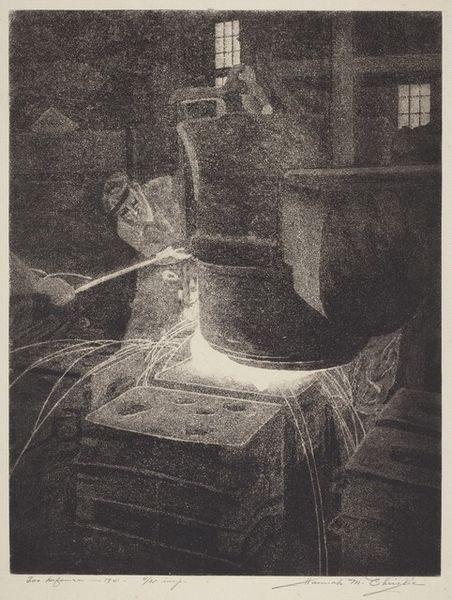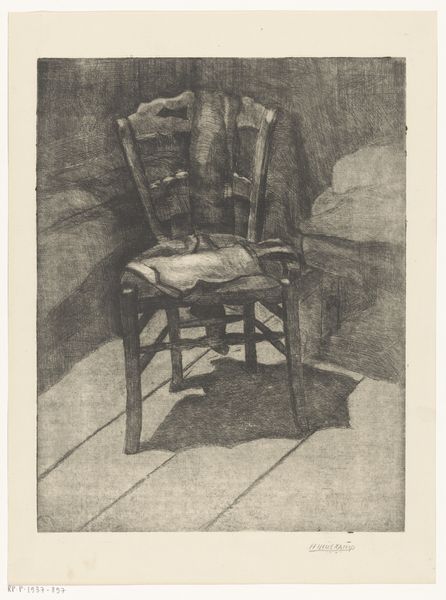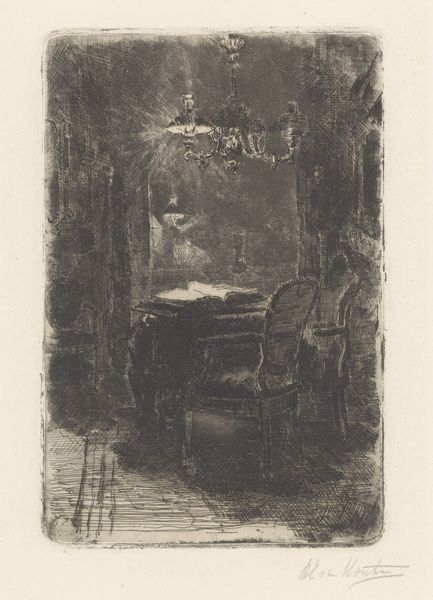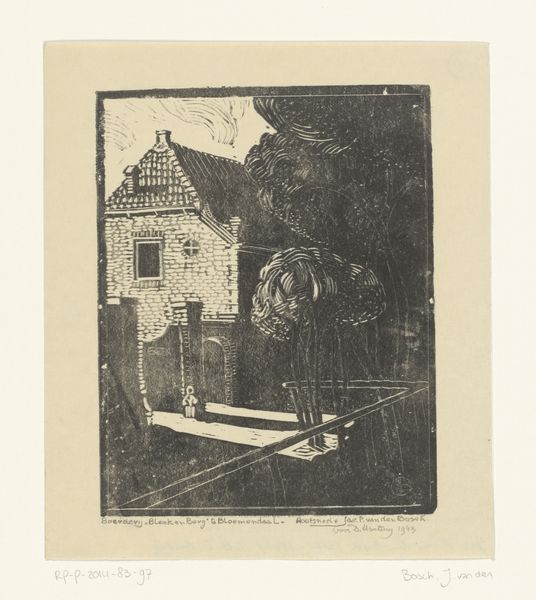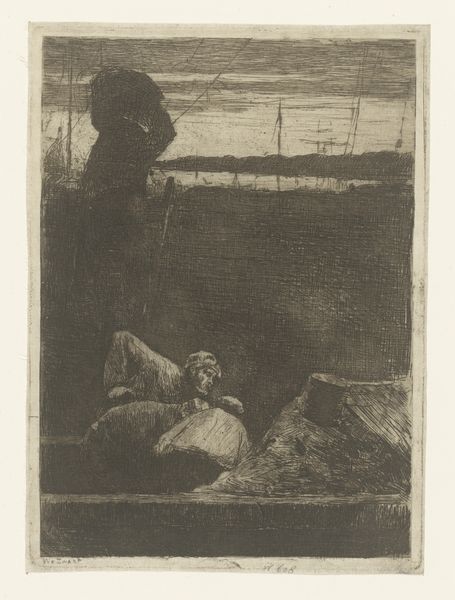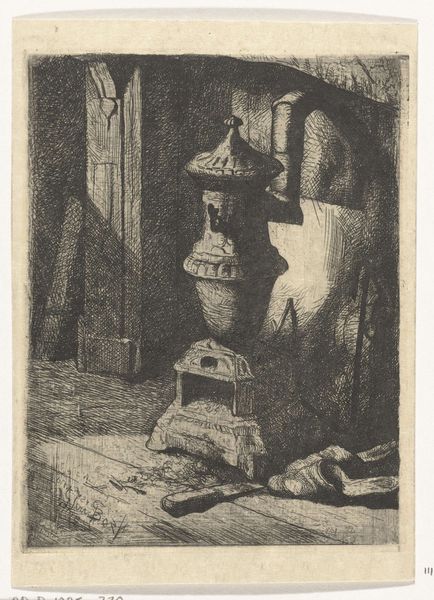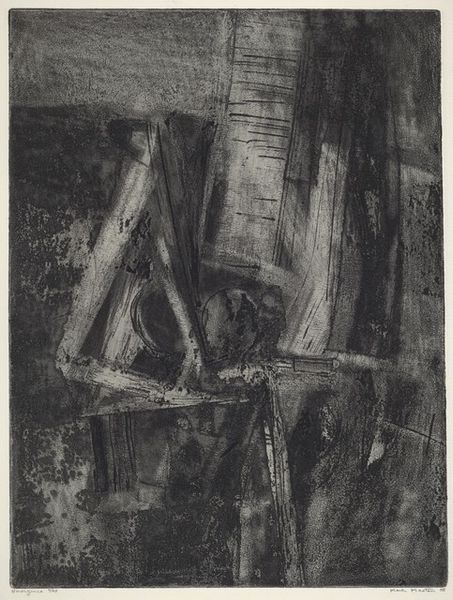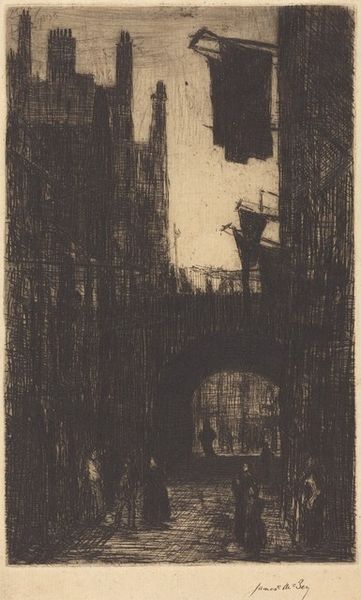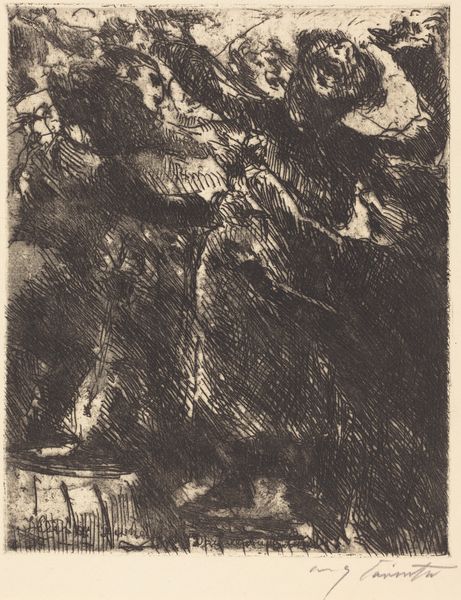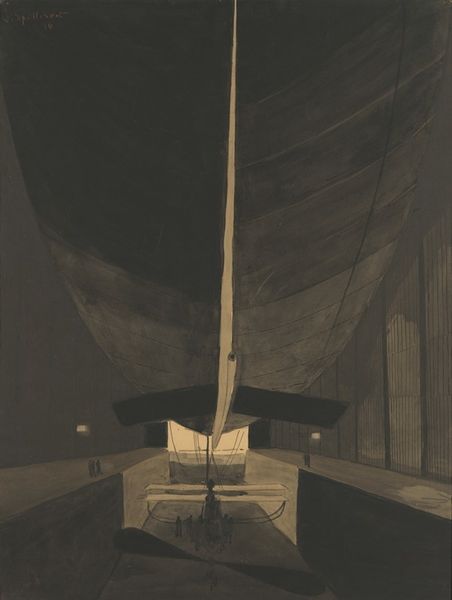
print, etching
# print
#
etching
#
19th century
#
realism
Dimensions: plate: 21.9 x 14.7 cm (8 5/8 x 5 13/16 in.) sheet: 67.2 x 30.9 cm (26 7/16 x 12 3/16 in.)
Copyright: National Gallery of Art: CC0 1.0
François Bonvin’s “Frontispiece” is an etching, a printmaking process where lines are incised into a metal plate with acid, then inked and pressed onto paper. The varying depths and densities of the etched lines give the objects their volume and texture. Notice how the light catches on the glassware, contrasting with the dark background and the textured cloth draped over the table. Bonvin was deeply engaged with the still-life tradition, but he also understood the social realities of his time. Etching, as a reproductive medium, democratized art, making images accessible to a wider audience beyond the wealthy elite who could afford original paintings. This particular image is of studio props. Consider the labor involved in producing these goods – the glassblowing, the crafting of writing implements, and the weaving of cloth, each a testament to human skill. By foregrounding these humble objects, Bonvin elevates the everyday, reminding us of the value of both artistic and manual work. It’s a reminder that art is not just about the final product, but also about the materials, the making, and the social context in which it is created.
Comments
No comments
Be the first to comment and join the conversation on the ultimate creative platform.
